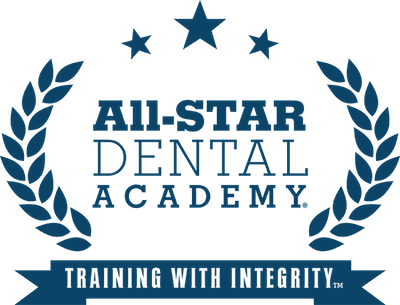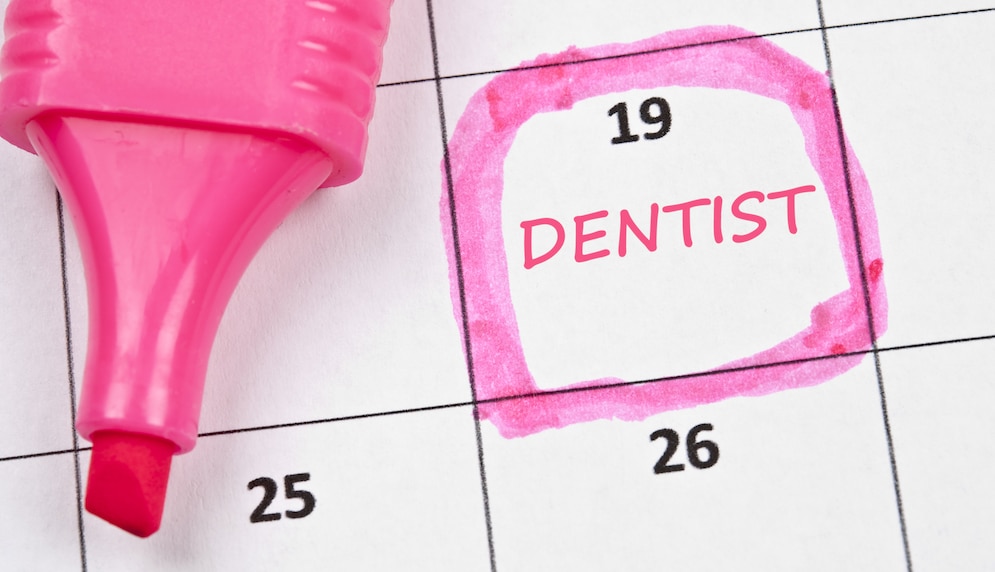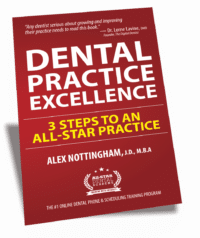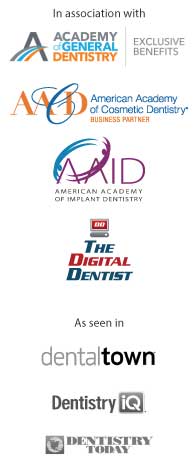When you focus on dental scheduling training for your team, you run into a stark reality: There are only a few ways to increase revenue: work more, charge more, or become more efficient.
The problem is that working more hours typically leads to burn out for the dentist and the team, and charging higher than market rate for procedures can turn patients away. Working more efficiently, however, provides the highest return for your investment.
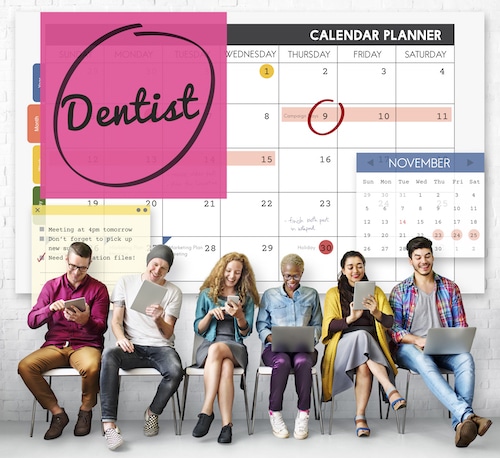
There are three basic steps to preparing the schedule for efficient scheduling:
Step 1: Block Scheduling / Pre-blocking (Dental Scheduling Training)
Pre-blocking your schedule with enough time set aside each day for specific types of procedures virtually guarantees you’ll schedule productive days every day.
Block scheduling allows you to control the schedule by providing the correct amount of time to complete procedures as well as most efficiently utilize your assistants.
Good scheduling control allows you to give patients what they want – you to be on time – all while keeping the Doctor happy.
Start block scheduling by taking all of the procedures that are done in your practice and dividing them into two basic categories.
Primary care consists of any procedure that requires lab work or a tooth to be prepped but is not a filling.
Secondary care would be all of your other procedures.
The key to pre-blocking is that time is always available and that you hold the open pre-blocked time slots for as long as possible; reserve pre-blocked times for up to 24 to 48 hours prior to the appointment date.
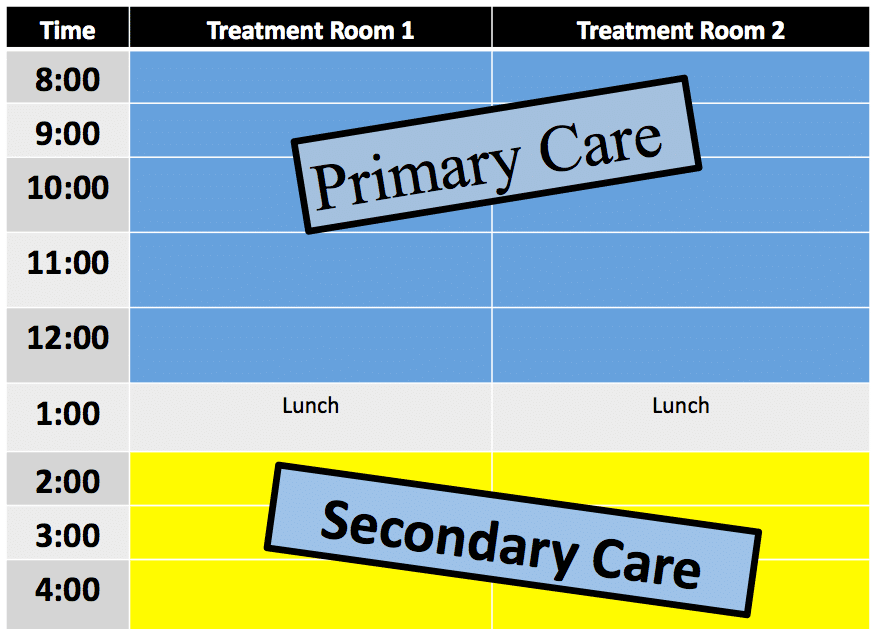
It’s important that everyone working with scheduling patients learns to forget certain phrases that you might have said in the past, such as: “When would you like to come in,” or “What’s convenient for you?”
We use verbiage and communication skills to guide patients into the slots that are available: “So that you can be seen as quickly as possible and not be here longer than planned the Dr. reserves specific time each day for the type of procedure you need. Let me look to find the first available appointment that is open.”
Give the patient a benefit as to why you want them to take the time you have available, and generally patients will take the first appointment that you give them.
Make sure to accommodate the special requirements of new patient appointments by pre-blocking slots in your schedule specifically for new patients. Most practices will reserve right after lunch or first thing in the morning for new patients.
Pre-block as many new patient appointments as necessary to accommodate the demand in your office.
>>> Learn about All-Star’s Online Training Program:
how to train your team to work effectively with patients on the phone. <<<
Step 2: Develop an understanding of the schedule by knowing who does what during procedures
Identify who does what during each procedure and how long it takes so that we can determine the appropriate amount of time to be scheduled.
There are different approaches to tracking appointment times:
Simple – 4 x 6 card:
- Write down the name of the procedure and then treat every line on the card like a unit of time on your schedule.
- List all the steps in the order that you follow to complete a procedure
- Assign who does what during that procedure and over to the right of the card we just list the materials
- When we know how long it takes then when we go to the schedule we can start to mark off on the schedule how much time is needed. Knowing how long it takes to do the procedure is one part of it but then knowing who does what during the procedure is very important so we can fill that in on the schedule.
Doctor tracking with practice management software:
- When it is filled in, the software tells you where the Dr. is and tells you when the Dr. is available to start another procedure (overlapping where it is available and appropriate to make best use of assistants.)
Step 3: Team Roles in building an efficient schedule
Everybody plays a role in how the schedule is prepared and filled. Break down these scheduling responsibilities and make sure that everyone on the team is prepared.
Dental assistants:
Dental assistants are the point on establishing the scheduling time units for all procedures so that you can create an average standard appointment time.
List each step for every procedure so that you know the flow of the procedure, and then list the required materials, instruments, and equipment.
Business office:
It is the responsibility of the business office to use data from the dental assistants to design the pre-blocked schedule. You have to determine how much time do you need every day to get primary care procedures done, then pre-block time for your new patients. The number of appointments should be determined by how many new patients you want to see each month. The time that’s left over is for your secondary care.
Hygienist:
The Hygiene team should look for opportunities to call the doctor early so that the call won’t interrupt the dentist if they are the middle of another procedure.
Look at the schedule during morning huddle to coordinate when to do the periodic check. And work to coordinate with the dental assistant.
Dentist:
The dentist must set the intention for the practice to use a pre-blocking system and “stick with it.” The dentist must also determine training needs for the team. You have to accept that this is your job as the leader and the owner of the practice.
At All-Star Dental Academy, we make a distinction between being “busy” and being “productive.” A full schedule may help you feel busy, but being productive requires more thought and preparation.

Build a productive and efficient schedule that leverages pre-blocking so you can reach your true potential through dental scheduling training.
At All-Star Dental Academy, we have a robust training system that addresses dental scheduling training. You can learn more about this system by attending a free training webinar: Dental Practice Excellence, where we examine systems that help reduce or eliminate broken appointments, along with two other critical issues facing the dental practice, and how to overcome them.
